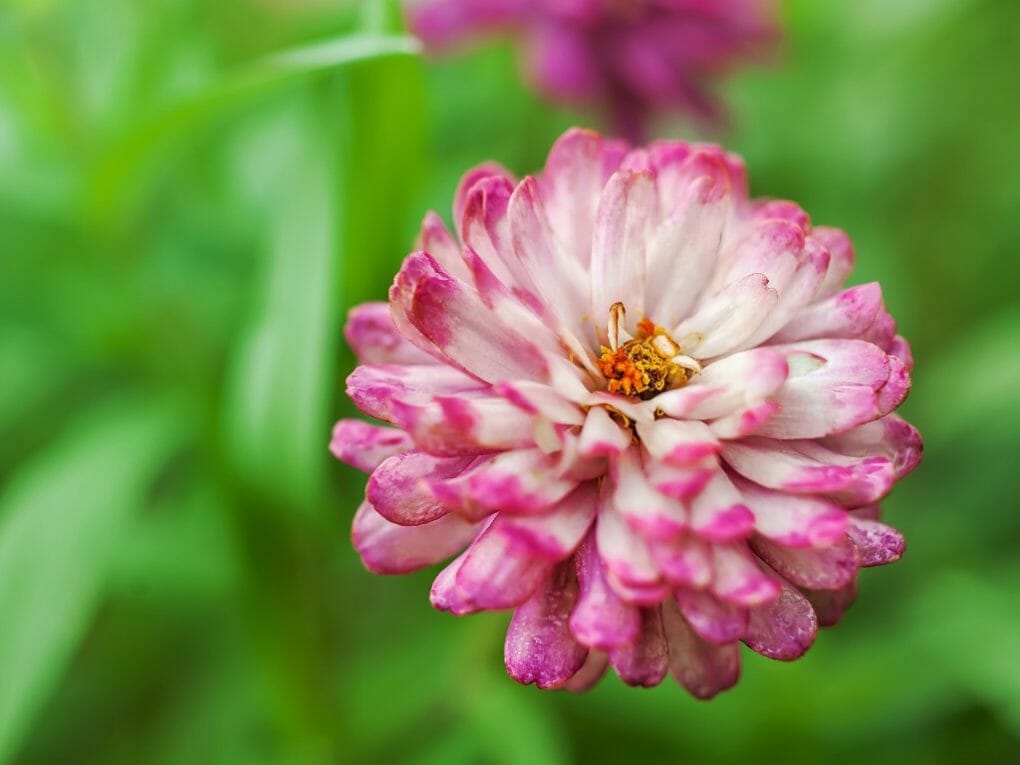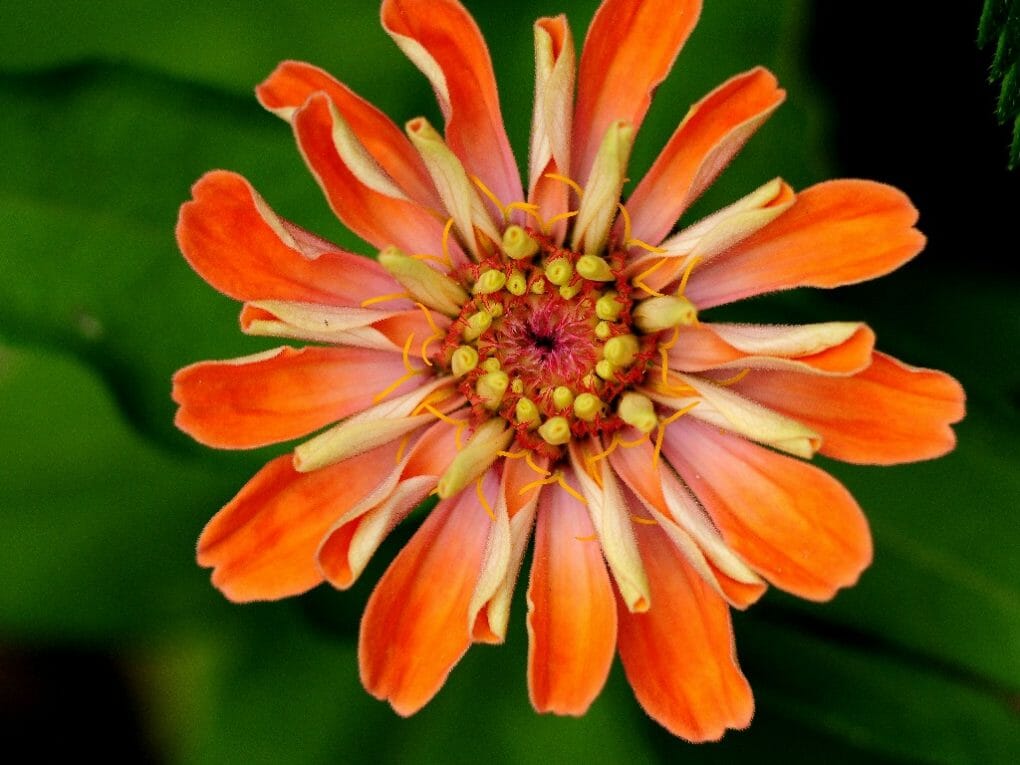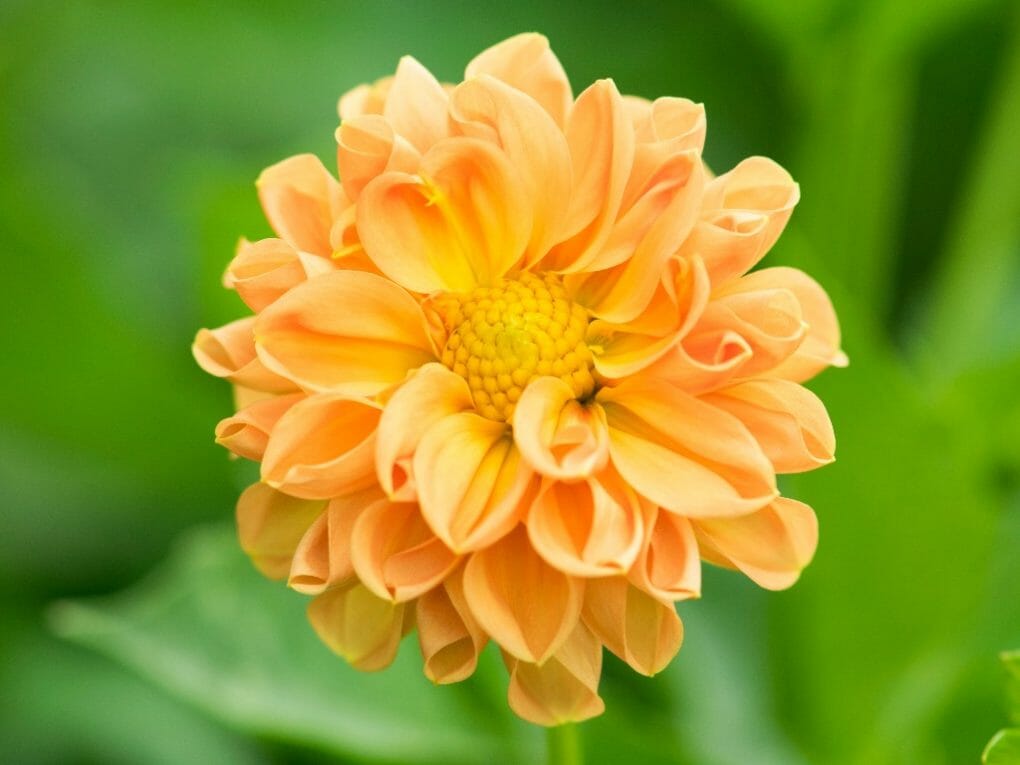Does Zinnia Self-Seed? Permitting Zinnias to Self-Sow

Zinnias are easy to grow in the garden as a whole. Plant the seeds right in the garden, and some types of zinnia will bloom in as little as 50 to 60 days! Zinnias have an excellent chance of germinating and growing the next spring if they are allowed to flower, produce seeds, and then be let fall to the ground once they have finished flowering and setting their seed. There is no assurance that it will take place, but it has the potential to do so is one of the primary reasons why so many gardeners adore these flowers.
If you were unaware of this fact, the Zinnia species are herbaceous annuals native to Mexico. They might be as short as eight inches, as tall as three feet, or even more. These hairy-stemmed, rough-leaved relatives of the sunflower feature cheery flowers that can be found in various brilliant hues, including red, yellow, orange, pink, purple, white or a mixture of these colors.
Zinnias are not only lovely to look at, but they also bring in a lot of pollinators. They thrive in heat and full sunlight, making them an ideal companion flower for your vegetable garden in the summertime. The simplicity with which they can be cultivated adds to their already considerable appeal.
Table of Contents
Permitting Zinnias to Self-Sow
Let zinnias flower and set seed naturally if you wish to harvest seeds or promote reseeding.
You may still appreciate flowers all through the Summer! It’s common practice for gardeners to stop deadheading their zinnias as soon as the first signs of fall appear, allowing them to continue blooming through the season. When this happens, the blooms will wither and die.
After the blossoms have faded, you can either leave the plant alone and hope the seeds will fall to the ground with the next wind and rain, or you can “help” them along by pushing the plant over.
Germination rates will increase in the spring if you smash the seed head in your hands and let the seeds fall randomly. To increase seed-to-soil contact, you can also choose to softly scrape the soil.
Getting Zinnias for the Harvest

Congratulations, you’ve accomplished your goal! Now that your zinnias have made it through an entire growing season, you want to continue enjoying their stunning blooms for as long as possible.
Flowers of the zinnia kind are highly prized for their use in floral arrangements. They can last for a week or more in water if picked at their peak. Before cutting the stems, double-check that the blossoms have fully opened. The “wiggle test” should also be administered. Shake the flower stem by gently gripping it approximately 12 inches down.
You shouldn’t trim the stem just yet if the flower’s head is drooping. If you cut the stem too soon, the flower may droop. The flower stem is ready to be cut and displayed in a vase if the flower head does not move when you shake the stem.
Growing Requirements
Season
Since zinnias are summer annuals, they normally thrive and bloom during warm temperatures. Zinnias cannot thrive in temperatures below 60 degrees Fahrenheit. They enjoy temperatures above 70 degrees Fahrenheit. The cool, wet spring circumstances are not optimal for these indigenous Mexicans. Unfortunately, if they suffer from severe frost, they will perish.
Location
Plant zinnias in full sun. Full sun exposure indicates that the plants receive six to eight hours of direct sunshine daily. If plants do not receive enough sunshine, they may become elongated and spindly or fail to blossom properly.
Soil
Zinnias are not particular about the type of soil they grow in but thrive in well-drained soil. Planting in direct sunlight is typically more important than selecting the ideal soil type. However, waterlogged soils rarely dry out will be a problem due to disease problems. Adding organic matter, such as compost, to heavy clay soil will improve its drainage capabilities. Additionally, you can plant zinnias in a raised bed if your land is too swampy.
Moisture
Zinnias grow extremely drought-tolerant once established, but immature plants must receive appropriate moisture. As a general guideline, 1 inch of water per week would be sufficient to ensure the health of your zinnias. This implies that if there has been no precipitation, you should rinse sandy soils at least twice each week. If your soil has more clay, once per week should be sufficient.
Do not water if the soil is already moist, but confirm that the moisture is not simply on the surface by inserting your finger a few inches into the soil. Zinnias should be watered close to their bases to reduce the risk of illness. Mulching around your plants will assist retain moisture, allowing you to water less frequently.
Fertilizer
Feeding levels are around average for zinnias. Whether I fertilize them or not, these are one of the easiest flowers to grow in my garden. Zinnias benefit from a balanced fertilizer application, either before planting or while the plants are actively growing. The macronutrients nitrogen, phosphorous, and potassium should all be present in about the same concentration in a balanced fertilizer.

When preparing your beds, you can also choose to add granular fertilizer or organic components like compost or manure to the soil.
If you let zinnias self-seed, you probably won’t be rotating the soil or adding many amendments. However, in the spring, you can use a broadcast spreader to spread fertilizer over the soil, or you can use a watering can or irrigation tape, or tubing to deliver liquid fertilizer.
Plants can benefit from a foliar fertilizer applied throughout the growing stage. Foliar fertilizer is a fertilizer that has been diluted with water and sprayed over the leaves of a plant. Many plant species can tolerate applications of fish emulsion combined with seaweed or compost tea. The root zone of the plant is another great place to apply this.
Don’t spray plants in the middle of the day while using foliar nutrients, as this can cause them harm. Spraying foliar fertilizers in the evening is preferred by many farmers since it gives the plant all night to absorb the nutrients, and the sun isn’t directly striking the leaf surface, preventing any scorching.
Always read the label before using any fertilizer on your plants, organic or not.
Thinning
Zinnia seedlings need to be thinned out to have enough space between plants. Plants should be between 6 and 12 inches apart for little kinds and between 9 and 18 inches for large ones.
If you want your zinnias to self-seed in the garden, you’ll need to thin them out. It’s not uncommon for a cluster of zinnia seedlings to sprout simultaneously in the same location because the seeds tend to fall in groups. Space, light, water, and nutrients are all factors that must be considered if all of these plants are to thrive.
Pinching
Zinnia seedlings should be pinched around 6-8 inches tall and have three to four true leaves. Flowers produced by a plant can be increased through pinching to encourage the branching of the main stem. Just above a rosette of leaves, pinch off the plant’s top.
Deadheading
Deadheading means removing spent flowers from a plant to encourage fresh growth. Zinnias are known as “cut-and-come-again” flowers in the realm of the cut flower trade. This means the more blossoms you remove from the plant, the more branches and flowers it will send out to replace them. Because of this quality, zinnias are popular for a summer bouquet.
When the petals on a flower start to turn brown and fade, it’s time to trim the stem above a set of leaves. Make your incisions a little further into the plant than just above the first set of leaves. Reduce the number of nodes by a few to maintain the plant’s ideal form. The nodes are the junctions between the stem and the leaves.
When pinching, trimming, or deadheading a plant, always use a clean set of snippers to prevent the spread of disease.
